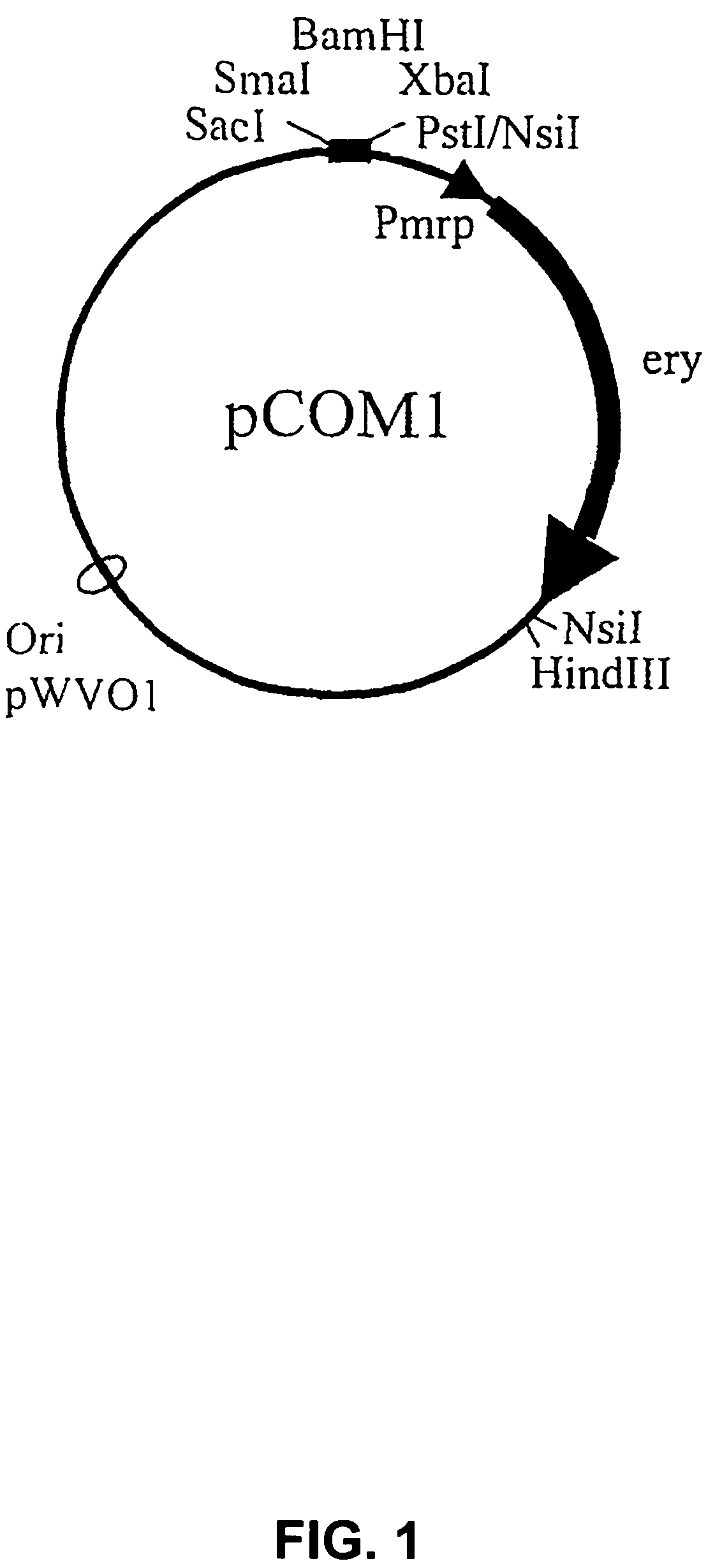Virulence of streptococci
a streptococci and virulence technology, applied in the field of biotechnology, can solve the problems of meningitis in man, fatal consequences, and inability to protect human infants, and achieve the effect of minor effects on virulence and increased virulence of these strains
- Summary
- Abstract
- Description
- Claims
- Application Information
AI Technical Summary
Benefits of technology
Problems solved by technology
Method used
Image
Examples
Embodiment Construction
[0030]Bacterial strains and growth conditions. The bacterial strains and plasmids used herein are listed in Table 1. S suis strains were grown in Todd-Hewitt broth (code CM189, Oxoid), and plated on Columbia agar blood base (code CM331, Oxoid) containing 6% (v / v) horse blood. If required, antibiotics were added at the following concentrations: erythromycin, 1 μg / ml. E coli strains were grown in Luria broth and plated on Luria broth containing 1.5% (w / v) agar. If required, 200 μg / ml of erythromycin was added.
[0031]pCOM1. pCOM1 (FIG. 1) is based on the replication functions of pWVO1. Further, the vector contained the erythromycin-resistance gene of pE194 preceded by the promoter region of the mrp gene, as well as the SacI-PstI part of the multiple cloning site of pKUN19. As the result, pCOM1 contained a unique BamHI site (FIG. 1).
[0032]Construction of genomic S. suis library in pCOM1. Sau3AI partial digests of the DNA of the pathogenic S. suis serotype 2, strain 10 were size fractiona...
PUM
 Login to View More
Login to View More Abstract
Description
Claims
Application Information
 Login to View More
Login to View More - R&D
- Intellectual Property
- Life Sciences
- Materials
- Tech Scout
- Unparalleled Data Quality
- Higher Quality Content
- 60% Fewer Hallucinations
Browse by: Latest US Patents, China's latest patents, Technical Efficacy Thesaurus, Application Domain, Technology Topic, Popular Technical Reports.
© 2025 PatSnap. All rights reserved.Legal|Privacy policy|Modern Slavery Act Transparency Statement|Sitemap|About US| Contact US: help@patsnap.com



